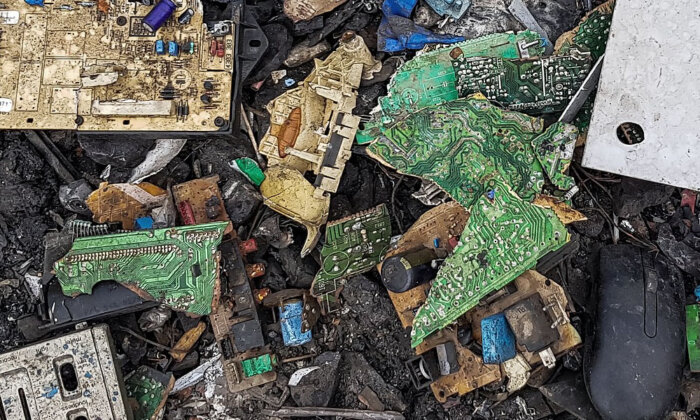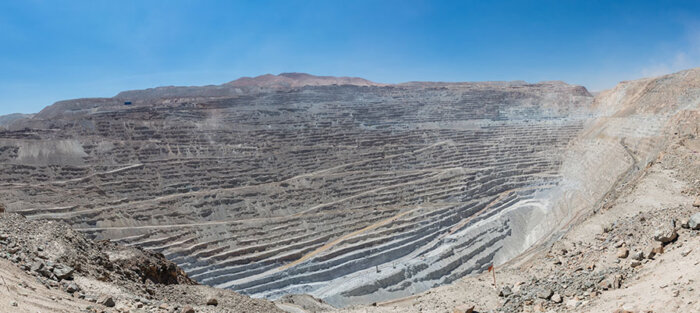What E-Waste Journalism Gets Wrong

Over the last two decades, electronic waste has gained newsworthiness as a pithy parable about collective dreams of a technotopian future tempered by dark nightmares of toxic pollutant-fueled collapse. But, with rare exceptions, e-waste journalism has ossified into a pat narrative about waste dumping. A few photos of piles of dead electronics pawed over by racialized workers or a spy-thriller-esque tracker pinging location data hidden in a shipping container can make for compelling narratives, but wildly shortsighted news.

Stories that rely on photographs of discarded devices tell us very little about the actual devices. Were those photographed electronics, for example, traded across borders for reuse? If so, international law expressly permits that (whether the law ought to permit it is another matter). Similarly, data that might be extracted from hard drives in discarded electronics may not tell us much about whether the device was reused before reaching a scrap yard, and leaves all sorts of electronic devices that don’t contain memory, such as keyboards and monitors, unaccounted for.
Another more recent approach of e-waste journalism is to rely on data from location trackers hidden in devices. Sometimes journalists themselves do this, other times they use data collected by advocacy groups. Either way, unless rigorous methods are used, these data offer little in the way of factual accuracy. To be clear: The accuracy problem has nothing to do with disputing the results of individual trackers. Instead, it has everything to do with the need for valid sampling. Even in cases where hundreds of trackers are deployed, a whole host of confounding variables need to be properly accounted for. These include everything from the variety of devices and their condition when sent into collections systems, to the geography of legislation mandating electronics recycling.
Stories that rely on photographs of discarded devices tell us very little about the actual devices.
A shared problem with all of these approaches to e-waste news gathering is that they mistake precision for accuracy. Yet, in the absence of a proper sampling strategy, it’s impossible to tell the difference between the dynamics of reuse markets versus scrap markets, domestic consumption, and foreign dumping. Like an archer shooting arrows toward a bull’s eye, it is possible to be precise but inaccurate, as when all arrows miss the target but land in a tight formation on the tree beside it. Being precise but inaccurate is a substantial risk without proper sampling, yet it is a costly and logistically challenging issue that no journalist or advocacy group has yet overcome.
E-waste reportage would be significantly improved if journalists looked more carefully at some basic economic assumptions built into the usual waste-dumping story line. It is often assumed that what drives exports of e-waste from wealthy countries like the U.S. or regions like Europe is that it’s cheaper to dump discarded products overseas as trash. But the actual costs of shipping or landfilling can’t support that claim. Landfill costs in California, for example, range from $0 to $125 per ton. Shipping a container from there to the cheapest Asian destination is more than four times costlier than even the most expensive California landfill. Attempting to avoid the costs of landfilling, then, isn’t what’s going on. Instead, it’s that there are buyers who pay the cost of shipping because they can turn a profit when what’s inside a container is scrap or even more profit when what’s inside are reusable and repairable electronics.
The operations currently running to ‘clean up’ groundwater pollution in Silicon Valley from electronics manufactured there in the 1970s and 1980s will finish the job sometime around the year 2720.
Some sellers on the export side try to play a double game — say, charging U.S. customers to dispose of their discarded electronics without exporting them, while then turning around and selling to overseas buyers for scrap and reuse markets. That kind of business model risks breaking the law when businesses advertise they play one game (no export of collected electronics), but actually play another. Some buyers on the import side make higher profits from reusable, repairable, and scrap electronics because they take advantage of low- or no cost landfilling or open dumping from their operations. Those strategies, too, can violate local environmental regulations and the results can be ugly.
Pollution, waste, and other ‘externalities’ arising from the mining for, and the manufacture of, electronics are gobsmacking in terms of their tonnage, toxicity, and harms. But the almost obsessive focus in e-waste journalism on the destinations of electronics discarded by Americans and Europeans blinds news consumers to those far more massive consequences of mining and manufacturing.

Globally, the electronics sector is one of the largest consumers of copper. One of the biggest copper mines in the world is Chuquicamata, in Chile. By weight, it generates as much waste in 48 days of operation as American and Chinese consumers combined discard electronics in a year. Today, in Silicon Valley the operations currently running to ‘clean up’ groundwater pollution from electronics manufactured there in the 1970s and 1980s will finish the job sometime around the year 2720 (yes, some 700 years from now).
Pollution and waste from mining for and manufacturing of electronics dwarf those that arise from electronics discarded by consumers. That doesn’t mean those post-consumer discards should be ignored, but e-waste journalism that starts and ends in blighted foreign landscapes of dumps and scrap yards emphasizes the recycling trap. That kind of storytelling actually does harm, even as it seeks to do good. To focus on post-consumer issues reinforces a highly profitable industry strategy to keep costs for pollution and waste arising from their products off their own books. Meanwhile, companies can defer making changes in product design and chemistry.
Pollution and waste from mining for and manufacturing of electronics dwarf those that arise from electronics discarded by consumers.
Most e-waste stories, intentionally or otherwise, reinforce the idea that individual consumer responsibility is where the action ought to be. However, when it comes to electronics, consumers can buy things like cellphones and choose from a myriad array of makes, models, and features. But the conditions under which those electronics are made, the amalgams of toxicants they contain, and the scale of waste and pollutants arising during raw material extraction and manufacturing are so similar and so vast as to make the idea of ‘consumer choice’ basically meaningless as a waste prevention strategy. Yet, e-waste journalism only rarely gets beyond individualist, end-of-pipe framings of the issue. Most perniciously, that kind of journalism makes it harder to shift the conversation to where it matters most: upstream, to the effects of raw material extraction and manufacturing, where the real power lies.
Josh Lepawsky is Professor in the Department of Geography at Memorial University of Newfoundland, and the author of “Reassembling Rubbish.”



